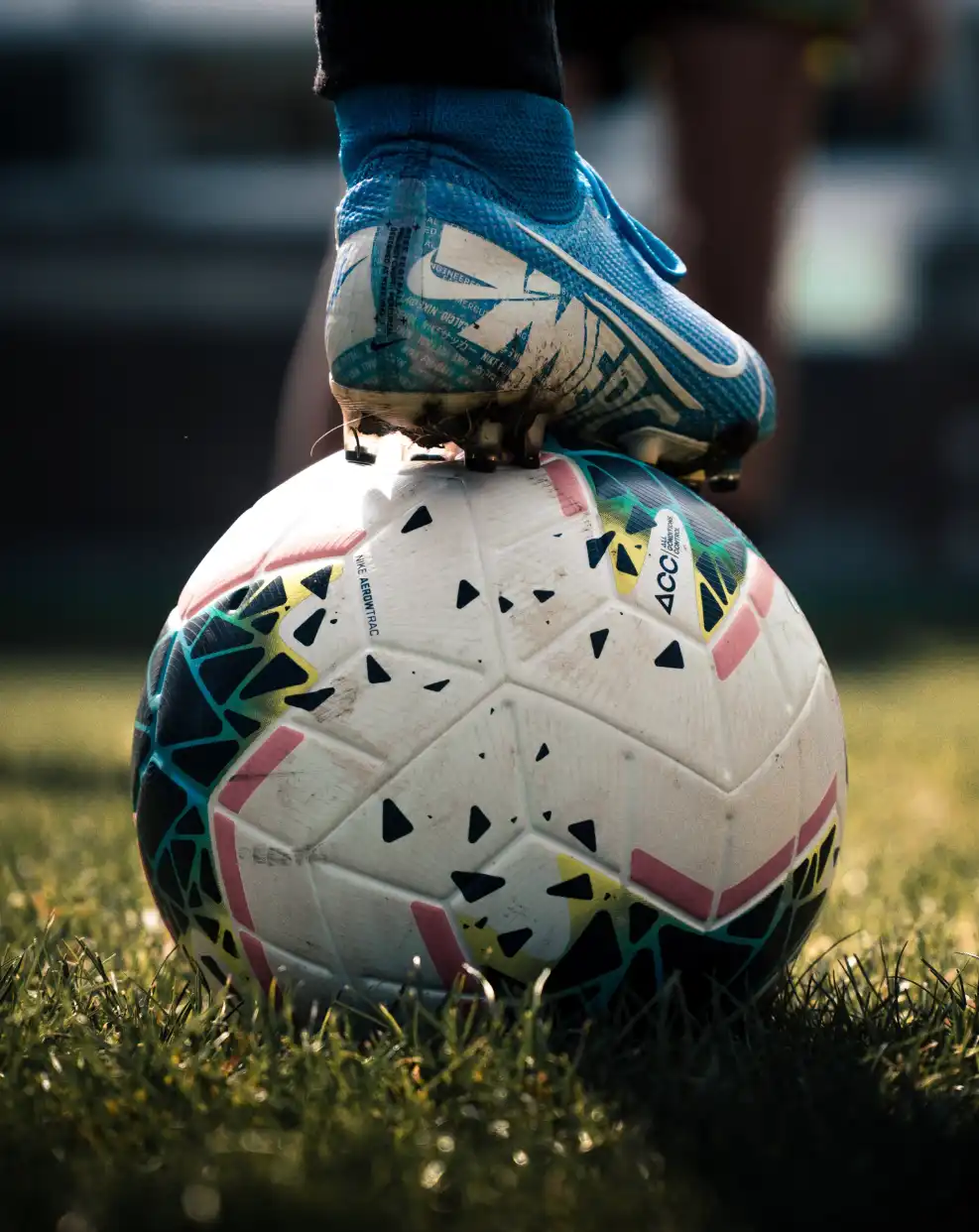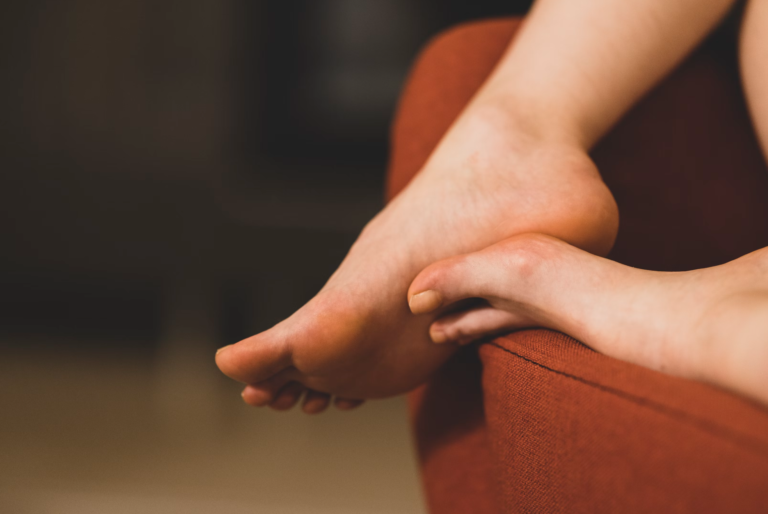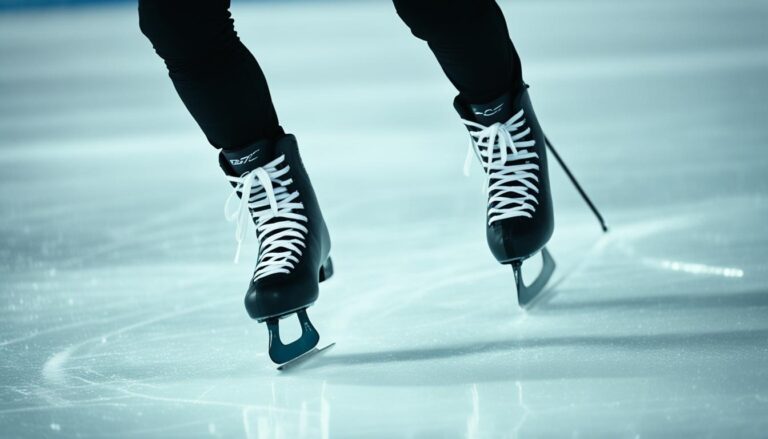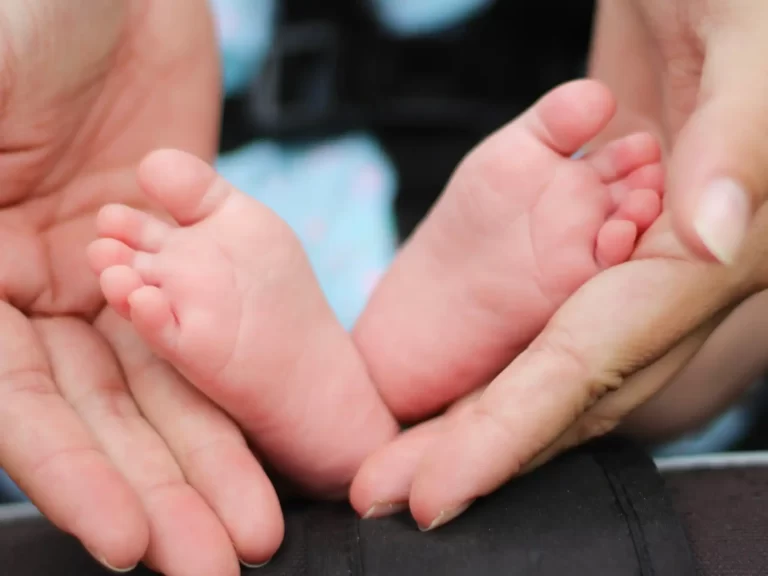Football Players With Flat Feet: What We Should Know
Many people, including professional football players, have flat feet or pes planus. This condition can make it hard for athletes. But, knowing about the causes, how common it is, and how to manage it can help. This knowledge can make a big difference for football players with flat feet.
Ever thought about how NFL players with flat feet deal with this challenge? Or how arched feet issues and overpronation in athletes affect their game? Finding out how flat feet and athletic performance are linked could help football players with flat feet. It might unlock their full potential.
Key Takeaways
- Flat feet, or pes planus, is a common condition among football players that can lead to various foot and ankle issues.
- NFL players with flat feet often face challenges related to overpronation and increased injury risk.
- Proper foot orthotics for sports and supportive footwear can help football players with flat feet manage the condition and reduce the risk of injuries.
- High arches in football can also present unique challenges, requiring a tailored approach to foot health and performance.
- Understanding the prevalence and impact of flat feet and athletic performance is crucial for helping football players optimize their on-field success.
Causes and Risk Factors
Flat feet, or pes planus, is when the arches of your feet fall flat. The entire foot touches the ground. This can cause overpronation, pain, and raise the injury risk for football players.
Many things can cause flat feet, like genes, age, injury, and some health conditions. If it runs in your family, you’re overweight, or into hard exercises like football, you’re at a bigger risk. Overpronation, common in athletes with flat feet, can make this problem worse.
It’s important for athletes, especially football players, to know about flat feet. They should take steps to manage it early. This can help avoid injuries and problems with performance.
Prevalence of Flat Feet Among Football Players
Football is known for its tough, high-impact style. This leads to more players having flat feet. Studies show that [NFL players with flat feet] are more common in football than in the general population.
NFL Players with Flat Feet
In the [NFL], quite a few players have flat feet. This can be tough for athletes. Studies show that NFL players have flat feet more often than most people.
Impact on Athletic Performance
While having flat feet might seem like a challenge, many [NFL players with flat feet] excel on the field. They use supportive shoes and special training. This helps them deal with any problems their flat feet might cause.
football players with flat feet
Football players with flat feet face a big challenge: overpronation. This happens when the foot rolls too much inward when walking or running. It can strain muscles, tendons, and cause more injuries like plantar fasciitis and stress fractures.
Overpronation and Injury Risks
Overpronation can harm athletic performance and up the risk of foot and ankle injuries. It makes the arches of the feet fall, making them less stable. This can lead to more sprains, strains, and overuse injuries. So, it’s important for these players to deal with overpronation.
Foot Orthotics and Supportive Footwear
Football players with flat feet can use foot orthotics and supportive shoes to reduce these risks. Custom orthotics can fix the inward rolling, making the foot more stable. This takes off the strain on muscles and tendons. Well-fitted, supportive shoes are also key. They enhance shock absorption and support the foot better.
Arched Feet and High Arches in Football
Flat feet are common in football, but players with high arches face unique challenges too. They might have problems with absorbing shock and staying stable. This could make them more likely to get injured, like sprained ankles or stress fractures in their feet.
Advantages and Disadvantages
Players with high arches might be good at quick, explosive movements because they transfer power well. But, they could also face more foot, ankle, and leg injuries because of their arches. Choosing the right shoes and doing specific strengthening exercises can help prevent these drawbacks in football.
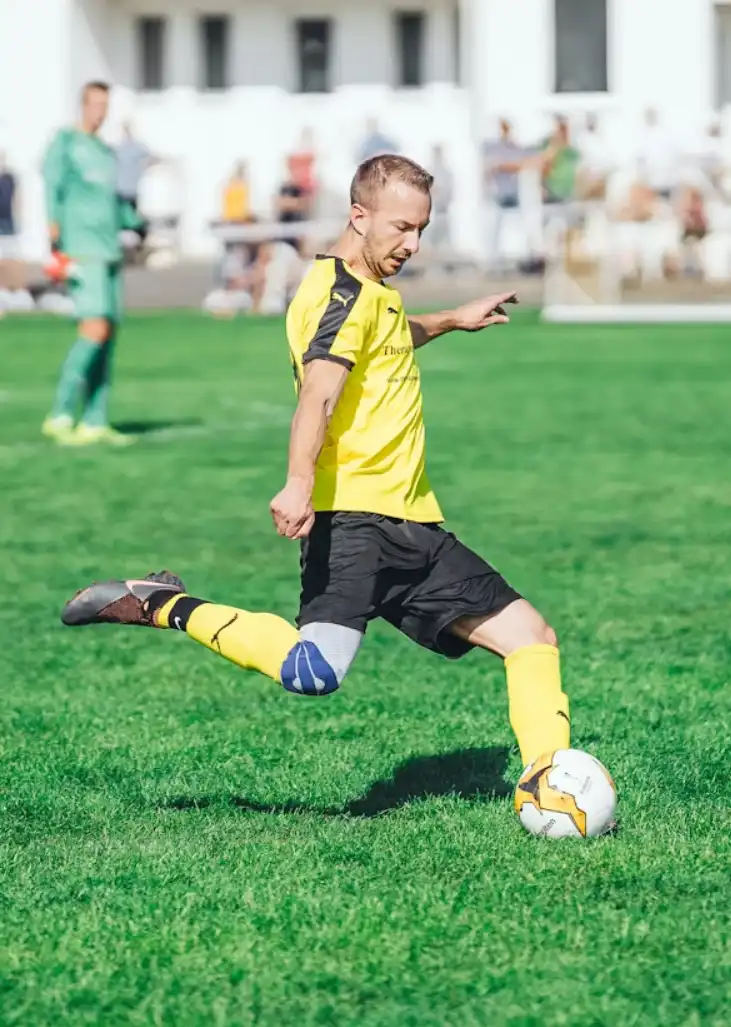
| Advantages of High Arches in Football | Disadvantages of High Arches in Football |
|---|---|
| Increased power transfer during explosive movements | Reduced shock absorption and instability |
| Improved agility and quick changes of direction | Higher risk of ankle sprains and metatarsal stress fractures |
| Enhanced ability to generate force and speed | Decreased balance and stability during landing and cutting maneuvers |
Foot Injuries in Football Players
Football players often face foot and ankle issues. This is because the sport is highly impactful. Common injuries include plantar fasciitis, stress fractures, and ankle sprains.
Plantar Fasciitis
Many football players get plantar fasciitis, especially those with flat feet. It’s an issue where the tissue under your foot gets swollen. This can be really painful, making it tough for players to do their best. [plantar fasciitis treatment]
Stress Fractures and Sprains
Football is tough on feet, leading to stress fractures and sprains. Stress fractures are tiny cracks from the sport’s impact. Ankle sprains, caused by twisting the ankle, are also common. [preventing foot injuries, feet problems in football]
Prevention and Management Strategies
Football players with flat feet need a special plan to keep their feet healthy and their game strong. It’s important to have the right shoes and orthotics. Adding specific stretching and strengthening exercises is also key.
Proper Footwear and Insoles
Good, supportive shoes are a must for flat-footed football players. These shoes have extra arch support, control movement, and increase stability to fight overpronation. They also help your feet handle the hard hits of the game. Don’t forget about custom orthotics. They can make your foot support even better, reducing injury chances like plantar fasciitis.
Stretching and Strengthening Exercises
Special exercises are a great addition to a player’s routine. They can help relieve foot tension and boost function. Work on your calves, Achilles tendon, and foot muscles for more flexibility. Strengthening your foot’s tiny muscles and the big ones in your legs can make your feet stronger. This cuts the risk of injury for those with flat feet.
| Prevention and Management Strategies | Benefits |
|---|---|
| Proper Footwear and Insoles |
|
| Stretching and Strengthening Exercises |
|
A full plan that involves getting the right shoes, orthotics, and doing special exercises can help football players with flat feet a lot. It lowers the chance of foot injuries. And it boosts how well they play and their foot health overall.
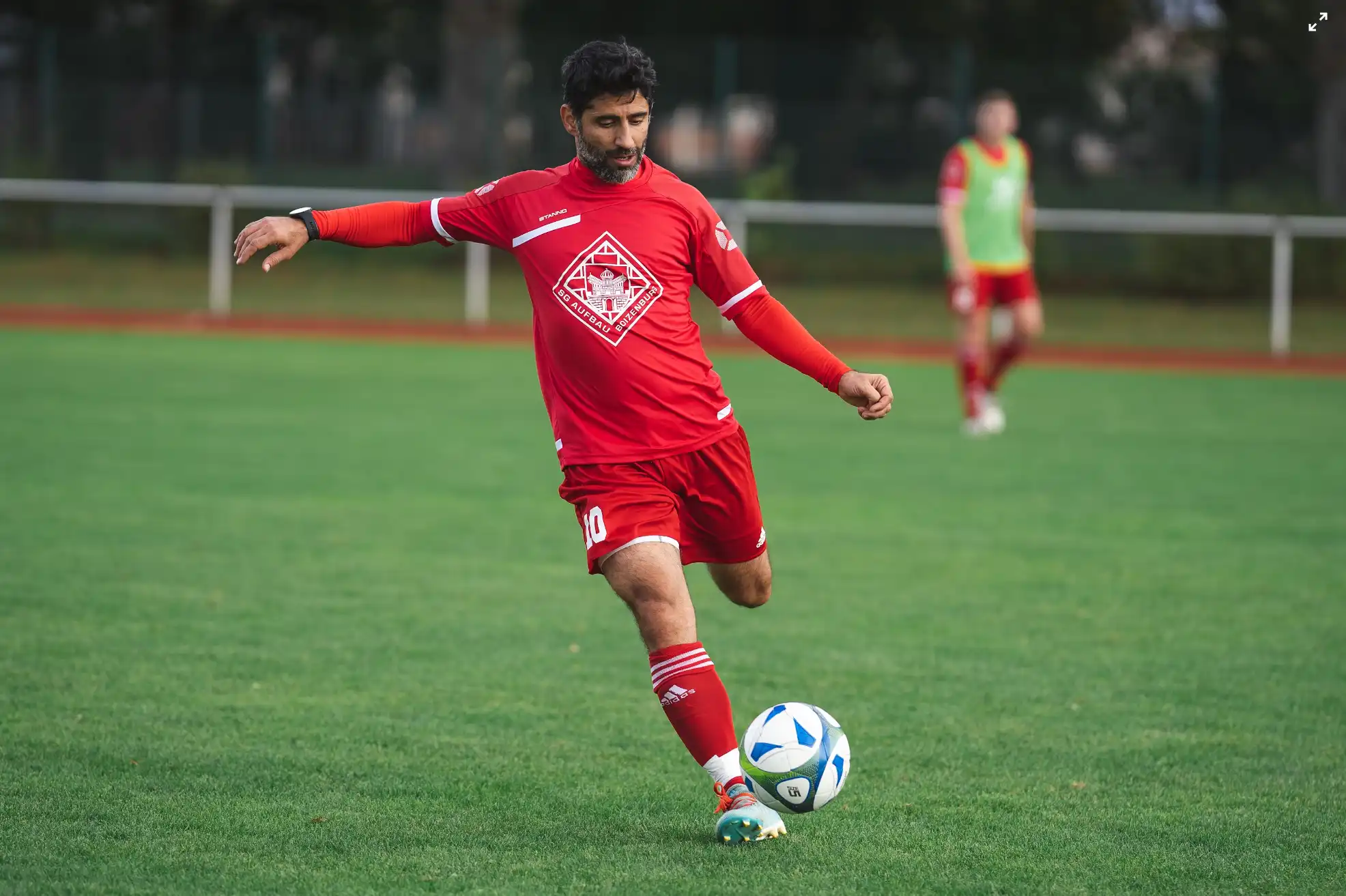
Foot Orthotics for Sports
For football players with flat feet, foot orthotics can be a game-changer. These inserts provide support and alignment. They help with overpronation, poor shock absorption, and the risk of injury.
Types of Orthotics
Several types of orthotics can help [foot orthotics for sports] athletes. Each type has its own features. Here are some common ones:
Rigid orthotics are hard, made of materials like plastic or carbon fiber. They control foot motion and add stability. They are great for those with severe flat feet or needing more support.
Soft orthotics are made from flexible materials like foam or gel. They absorb shock and cushion the feet. Players who feel pain during high-impact activities can find them beneficial.
Semi-rigid orthotics offer some flexibility with support. They provide a mix of stability and shock absorption. They’re a good pick for players needing both.
Benefits and Considerations
Using [foot orthotics for sports] can help football players in many ways:
Orthotics improve foot alignment and stability. They correct overpronation. This keeps the feet in a safer, more stable position, reducing motion-related injury risks.
They enhance shock absorption, crucial in absorbing high forces in football. This is key for players with flat feet.
Orthotics can ease foot pain and discomfort from flat feet. They let players focus on their game without feet issues holding them back.
[Foot orthotics for sports] can boost agility, balance, and overall performance for football players. They help deal with the hurdles of flat feet.
Choosing [foot orthotics for sports] needs input from a podiatrist or certified orthotist. They ensure the orthotics fit well and meet the athlete’s needs. Also, to keep orthotics working well, they might need adjustment as time goes on.
Flat Feet and Athletic Performance
Many think flat feet make it hard to succeed in sports. But, numerous pro athletes show this isn’t true. Football stars like Tom Brady, Odell Beckham Jr., and Kyler Murray have flat feet. They’ve shared how they tackle the challenges.
Myths and Misconceptions
There’s a big myth that if you have flat feet, you can’t be great at sports. But that’s not all true. Lots of athletes with flat feet do well. They manage by understanding their condition and using the right training.
Success Stories of Athletes with Flat Feet
Odell Beckham Jr., who plays for the Los Angeles Rams, is an amazing football player with flat feet. He’s known for his speed and big plays. Kyler Murray, a quarterback for the Arizona Cardinals, is another example. He shows that flat feet won’t stop you from being a top athlete.
Players like Tom Brady prove flat feet don’t have to hold you back. The key is using custom orthotics, doing the right exercises, and wearing good shoes. This way, football players can do their best, no matter their arch.

